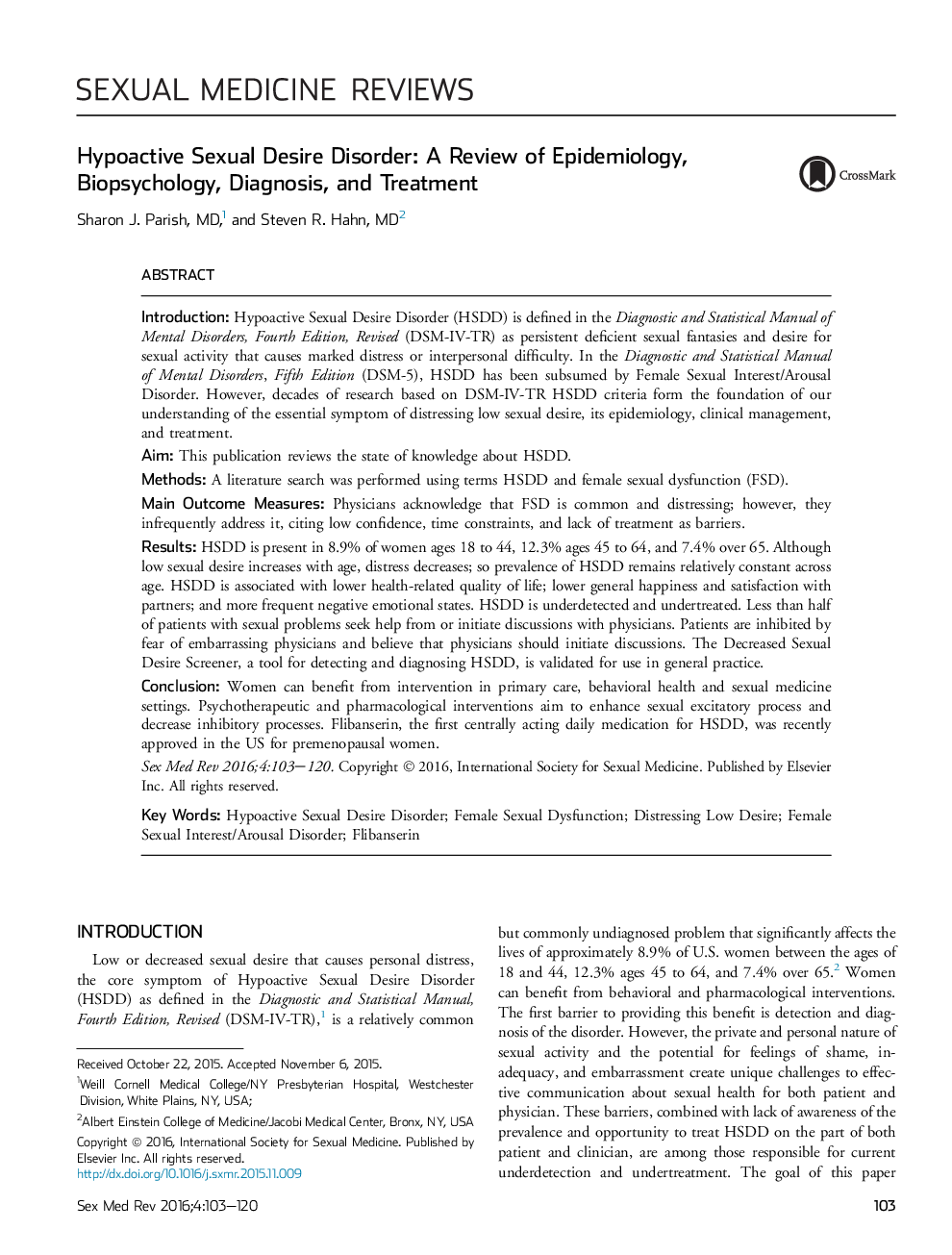| کد مقاله | کد نشریه | سال انتشار | مقاله انگلیسی | نسخه تمام متن |
|---|---|---|---|---|
| 4274723 | 1285286 | 2016 | 18 صفحه PDF | دانلود رایگان |
IntroductionHypoactive Sexual Desire Disorder (HSDD) is defined in the Diagnostic and Statistical Manual of Mental Disorders, Fourth Edition, Revised (DSM-IV-TR) as persistent deficient sexual fantasies and desire for sexual activity that causes marked distress or interpersonal difficulty. In the Diagnostic and Statistical Manual of Mental Disorders, Fifth Edition (DSM-5), HSDD has been subsumed by Female Sexual Interest/Arousal Disorder. However, decades of research based on DSM-IV-TR HSDD criteria form the foundation of our understanding of the essential symptom of distressing low sexual desire, its epidemiology, clinical management, and treatment.AimThis publication reviews the state of knowledge about HSDD.MethodsA literature search was performed using terms HSDD and female sexual dysfunction (FSD).Main Outcome MeasuresPhysicians acknowledge that FSD is common and distressing; however, they infrequently address it, citing low confidence, time constraints, and lack of treatment as barriers.ResultsHSDD is present in 8.9% of women ages 18 to 44, 12.3% ages 45 to 64, and 7.4% over 65. Although low sexual desire increases with age, distress decreases; so prevalence of HSDD remains relatively constant across age. HSDD is associated with lower health-related quality of life; lower general happiness and satisfaction with partners; and more frequent negative emotional states. HSDD is underdetected and undertreated. Less than half of patients with sexual problems seek help from or initiate discussions with physicians. Patients are inhibited by fear of embarrassing physicians and believe that physicians should initiate discussions. The Decreased Sexual Desire Screener, a tool for detecting and diagnosing HSDD, is validated for use in general practice.ConclusionWomen can benefit from intervention in primary care, behavioral health and sexual medicine settings. Psychotherapeutic and pharmacological interventions aim to enhance sexual excitatory process and decrease inhibitory processes. Flibanserin, the first centrally acting daily medication for HSDD, was recently approved in the US for premenopausal women.
Journal: Sexual Medicine Reviews - Volume 4, Issue 2, April 2016, Pages 103–120
